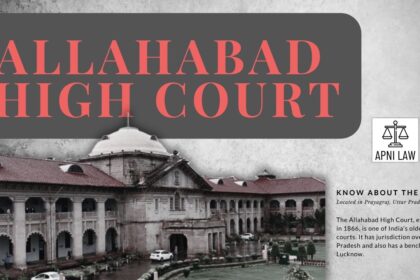Code
In this Chapter,–
(a) “detained” includes detained under any law providing for preventive detention;
(b) “prison” includes,–
(i) any place which has been declared by the State Government, by general or special order, to be a subsidiary jail;
(ii) any reformatory, Borstal institution or institution of a like nature.
Explain it
This section defines several key terms, including:
- “Court”: This refers to any court empowered under the CrPC to exercise jurisdiction in criminal matters.
- “Judge”: This encompasses any judicial officer, including a Magistrate, a Sessions Judge, a High Court Judge, or a Supreme Court Judge.
- “Magistrate”: This term encompasses various types of magistrates, such as Judicial Magistrates, Executive Magistrates, Metropolitan Magistrates, etc., who have specific powers and jurisdictions outlined in the CrPC.
- “Public Prosecutor”: This refers to the officer appointed by the government to conduct prosecutions on behalf of the state.
- “Police Officer”: This encompasses officers belonging to the Indian Police Service or any other police force authorized to investigate and apprehend offenders.
- “Officer-in-charge”: This refers to the officer who is in charge of a police station or a specific area.
- “Investigating Officer”: This designates the police officer responsible for investigating a particular case.
- “Offence”: This refers to any act or omission punishable under the Indian Penal Code or any other law.
- “Cognizable Offence”: This signifies an offence for which a police officer can arrest a suspect without a warrant.
- “Non-cognizable Offence”: This signifies an offence for which a police officer cannot arrest a suspect without a warrant.
- “Bailable Offence”: This denotes an offence for which the accused can be released on bail.
- “Non-bailable Offence”: This denotes an offence for which the accused cannot be released on bail.
- “Summons-case”: This refers to a case where the accused is summoned to court, and no arrest is necessary.
- “Warrant-case”: This refers to a case where a warrant for the arrest of the accused is issued.
- “Complainant“: This denotes the person who files a complaint or report of an offence.
- “Accused”: This denotes the person against whom a complaint or report is filed, or who is accused of committing an offence.
- “Witness”: This refers to a person who has personal knowledge of the facts of a case and can testify in court.
- “Document”: This includes any writing, map, plan, graph, or electronic record that can be used as evidence in court.
Illustrate it
A police officer is investigating a case where a person is accused of theft. The theft is considered a cognizable offence, meaning the officer has the power to arrest the suspect without a warrant. This falls under the definition of “cognizable offence” provided in Section 266.
Common question and answers regarding the code
Q: What is the significance of Section 266 in the CrPC?
A: This section defines key terms used throughout the CrPC, ensuring uniformity in understanding and applying the code’s provisions.
Q: Does this section apply to all types of criminal cases?
A: Yes, Section 266 applies to all criminal cases, regardless of the nature of the offence or the stage of proceedings.
Q: What is the distinction between a “warrant-case” and a “summons-case”?
A: In a “warrant-case”, the court issues a warrant for the arrest of the accused, while in a “summons-case”, the accused is simply summoned to court without arrest.
Q: What is the role of the “Public Prosecutor” in a criminal case?
A: The Public Prosecutor represents the state and prosecutes the accused in criminal cases.








